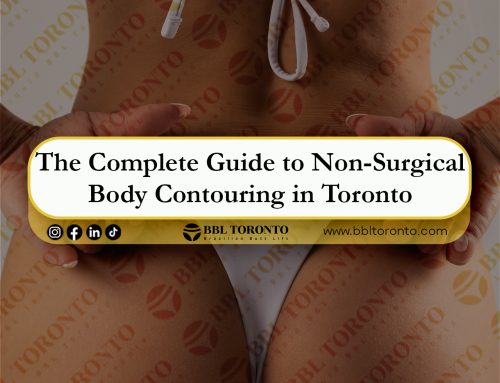The Brazilian Butt Lift (BBL) has revolutionized the world of body contouring by offering a non-surgical alternative to traditional butt augmentation. With its growing popularity, especially among individuals seeking a natural and less invasive approach, dermal fillers have emerged as a key component in modern BBL techniques. Unlike traditional fat transfer, dermal fillers provide volume enhancement through injectable substances, making the procedure quicker, safer, and with minimal downtime.
To truly appreciate the effectiveness of dermal fillers in BBL, it is essential to understand how these fillers interact with the complex anatomy of the buttocks — particularly with muscle and fat tissues. This article delves into the physiological and biochemical interactions between dermal fillers and these tissues, exploring how this knowledge informs safer and more effective treatments.
Understanding Dermal Fillers: Types and Mechanisms
Dermal fillers are a broad category of injectable materials designed to restore lost volume, contour body parts, and stimulate natural tissue regeneration. In the context of BBL, the most commonly used fillers include:
-
Hyaluronic Acid (HA): A naturally occurring substance in the skin that attracts and retains water molecules, HA fillers provide immediate volume and hydration. HA fillers are biodegradable and generally safe but may require repeat treatments.
-
Poly-L-Lactic Acid (PLLA): A biostimulatory filler that stimulates collagen production over time. PLLA does not provide immediate volume but gradually thickens the treated area by inducing fibroblast activity.
-
Calcium Hydroxylapatite (CaHA): Another biostimulatory filler that provides both immediate volume and collagen stimulation, CaHA fillers are thicker and longer-lasting compared to HA.
Each type of filler interacts differently with the surrounding tissues based on its composition, particle size, and biochemical properties. The choice of filler depends on the patient’s goals, anatomy, and the injector’s expertise.
Anatomy of the Buttocks: Muscle and Fat Tissue Layers
To understand filler interaction, it’s important to review the anatomy of the buttocks. The primary components include:
-
Gluteus Maximus: The largest and most superficial muscle responsible for the bulk and contour of the buttocks.
-
Gluteus Medius and Minimus: Smaller muscles that support hip stability and shape.
-
Fat Tissue: Layers of subcutaneous fat overlay the muscles, providing softness and additional volume. The distribution of fat can vary greatly among individuals.
-
Skin: The outermost layer that covers and protects underlying structures.
The intricate interplay between these layers means that successful augmentation requires precise placement of fillers either within fat compartments, adjacent to muscles, or occasionally within muscle tissue, depending on the desired result.
How Dermal Fillers Interact with Muscle Tissue in BBL
Structural Support and Volume Enhancement
When dermal fillers are injected near or within the muscle tissue, they provide immediate structural support by physically occupying space and pushing the muscle outward. This volume enhancement contributes to the lifted and rounded appearance characteristic of a well-done BBL.
Stimulation of Collagen Production
Certain fillers, especially PLLA and CaHA, work beyond mere volume replacement. They stimulate the muscle’s surrounding connective tissue to produce new collagen fibers. Collagen is a vital protein that gives skin and connective tissues their strength and elasticity. This collagen induction leads to gradual thickening of the muscle’s support framework, resulting in improved tone and lift over time.
Impact on Muscle Movement
Muscle tissue is dynamic, constantly contracting and relaxing during daily movements. Fillers must be placed thoughtfully to avoid impeding natural muscle function. Overly deep or large filler deposits in the muscle can cause discomfort or restrict mobility. Therefore, expert injectors carefully calibrate the amount, depth, and location of fillers to complement muscle function rather than hinder it.
Risks and Precautions
Injecting fillers into muscle tissue carries risks such as uneven distribution or formation of lumps (nodules). There’s also a potential for vascular complications if fillers inadvertently enter blood vessels, leading to serious side effects. Proper anatomical knowledge and use of imaging tools like ultrasound help reduce these risks significantly.
How Dermal Fillers Interact with Fat Tissue in BBL
Immediate Volume Addition
When fillers are placed within the fat layers, they directly increase the volume and enhance the natural curves of the buttocks. Fat tissue, being softer and more pliable, allows fillers like HA to integrate seamlessly, providing a smooth and natural feel.
Hydration and Tissue Expansion
Hyaluronic acid fillers are hydrophilic — meaning they attract and retain water molecules. This property leads to increased hydration in fat tissues, making the treated area appear plumper and healthier. This hydration also improves skin texture and elasticity around the buttocks.
Synergy with Fat Transfer Procedures
In some BBL treatments, dermal fillers are used alongside fat transfer (lipofilling). Fillers can improve fat cell survival by providing scaffolding and encouraging vascularization, which nourishes the transferred fat. This combination leads to longer-lasting and more natural results.
Fat Cell Metabolism and Regeneration
Certain biostimulatory fillers promote the activity of adipocytes (fat cells), encouraging metabolism and regeneration. This biological interaction helps maintain volume and contour over time, extending the durability of the augmentation.
Placement Precision for Optimal Results
The fat compartments in the buttocks are divided into superficial and deep layers. Injectors aim to place fillers in the appropriate compartments based on the patient’s anatomy and desired outcome. Incorrect placement can lead to lumps, irregular contours, or unnatural appearance.
Safety Considerations for Filler-Based BBL Procedures
Thorough Patient Assessment
Every successful BBL begins with an in-depth evaluation of the patient’s anatomy, medical history, and aesthetic goals. This assessment helps the practitioner choose the most suitable filler type, volume, and injection technique.
Expertise and Technique
Injectors should have comprehensive knowledge of gluteal anatomy and injection safety protocols. Techniques such as slow injection, using cannulas instead of needles in certain areas, and aspiration before injection minimize the risk of vascular occlusion.
Avoiding Overfilling
While it may be tempting to achieve dramatic results, overfilling increases the chance of complications such as lumps, tissue necrosis, or uneven contour. Gradual treatments with spaced intervals allow the tissue to adapt and reduce adverse effects.
Post-Procedure Care
Proper aftercare, including avoiding pressure on the buttocks, refraining from strenuous activities, and following hygiene protocols, is vital to maximize results and minimize complications.
Comparing Dermal Fillers to Surgical BBL: Interaction Differences
Unlike surgical BBL, which involves fat harvesting and transfer, filler-based BBL relies solely on injectable materials to enhance volume. This distinction leads to several differences:
-
Recovery Time: Filler-based BBL has minimal downtime compared to surgery.
-
Interaction: Fillers act by integrating with existing tissues, while fat grafting introduces new living cells.
-
Longevity: Surgical BBL generally offers longer-lasting results; fillers require maintenance.
-
Safety: Non-surgical BBL carries fewer risks but requires precise injection to avoid complications.
Understanding how fillers interact with muscle and fat tissues helps practitioners select the appropriate method for each patient.
Future Trends in Dermal Fillers for BBL
Advancements in filler technology are continually improving safety and results. Researchers are developing:
-
Longer-lasting biostimulatory fillers that better mimic natural tissue.
-
Combination therapies that pair fillers with regenerative treatments like stem cells or platelet-rich plasma (PRP).
-
Imaging-guided injection techniques that enhance precision and safety.
These innovations promise to expand the role of dermal fillers in buttocks augmentation.
Conclusion
The interaction of dermal fillers with muscle and fat tissues is a complex but fascinating aspect of non-surgical Brazilian Butt Lift procedures. Fillers provide immediate volume, stimulate collagen and fat cell activity, and enhance the natural contours of the buttocks when applied with expert knowledge and precision. While risks exist, adherence to safety protocols and individualized treatment plans ensure satisfying and lasting results.
For those considering a Liquid BBL, understanding these interactions empowers patients to make informed decisions and set realistic expectations. With ongoing advancements, dermal fillers continue to shape the future of safe and effective body contouring.





